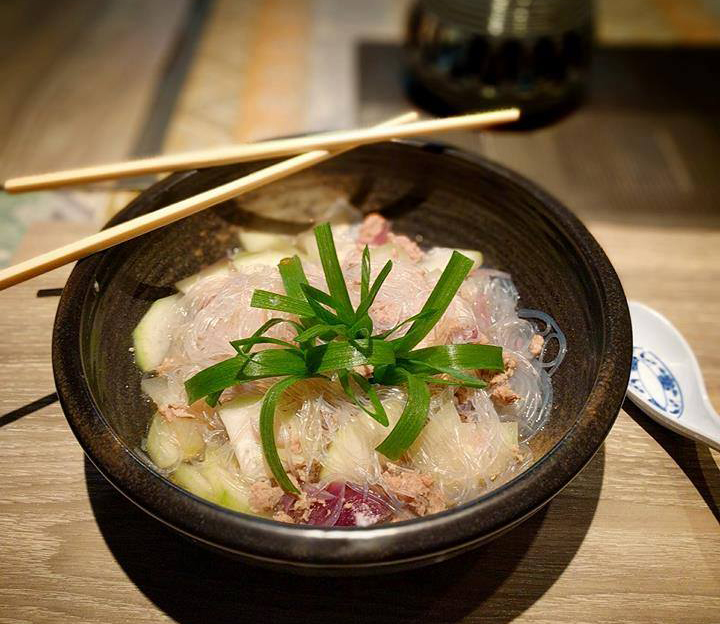The people of China, Italy and the Middle East have all claimed to have originated this phenomenally popular, string-like food, but it appears that science may have answered the
question once and for all.
In October 2005 an archaeological dig in northwestern China uncovered a pile of (very dried) noodles in a clay bowl buried under 10 feet of sediment. The noodles, made from
millet, were probably the remains of the last meal of a resident of Lajia, a town destroyed by an earthquake 4,000 years ago.
Noodles are to Asia what pasta is to Italy; the basis of many regional dishes for centuries. There are hundreds of Asian noodle varieties in all manner of shapes, colors,
flavors and textures. Noodles are supposed to be served long and uncut, the length of the noodle symbolizing longevity. Noodles are classified as fresh or dried and their preparation varies significantly depending on the type of starch used to produce them.
Varieties
Dried mung bean vermicelli noodles are sometimes called cellophane, glass or jelly noodles, and are made from the starch of mung beans. They have more of a slippery texture than rice vermicelli and are best used in coconut-based soups or salads. They come bundled together and, after separating them with kitchen scissors, should be softened in a bowl of boiling water for a few minutes before using in salads or adding directly to soups.
Fresh rice noodles, made from ground rice and water, are sold in various thicknesses. Use the thin variety in soups, the thick variety in stir-fries, and the sheets cut to size.
They are best bought fresh off the shelf in Asian grocery stores and used within seven days. Rinse briefly in warm water to separate. Cook for only a few minutes to heat through. Do not refrigerate or purchase these from the fridge section, as they will be impossible to separate.
Dried rice stick noodles (also called pad Thai) are thin, flat and translucent. Made from ground rice and water, they should be soaked in boiling water until almost tender, or ‘aldente’, and drained before adding to stir-fries or soups. This variety absorbs other flavors exceptionally well. Dried rice vermicelli noodles are almost hairlike in appearance and delicate enough to use in soups, salads and stir-fries. Rinse or soak in cold water until soft. Drain. Add to the dish a few minutes before serving to heat through.
Fresh hokkien noodles are wheat noodles enriched with egg and sold fresh or in vacuum-sealed packages in the fridge section of the supermarket. Hokkien vary in thickness from very thin spaghetti (best for soups or salads) to thick fettuccine (ideal for stir-fries). As they are wheat based, they need to be placed into boiling water until just soft before being added to the dish. They are perfect for stir-fries because they don’t break easily.
Chow mein noodles are sold fresh or dried. Like hokkien, they are wheat-based and egg-enriched, however they resemble long strands of very thin spaghetti. Place in a bowl and cover with boiling water. Drain immediately to prevent over-cooking then add to stir-fries at the last minute.
Dried egg noodles are virtually the same as dried hokkien noodles. Cook in boiling water until just tender. This variety are best used in soups or wet dishes because they have a tendency to break when stir-fried.
Cooking tips
When adding noodles to soup, it is often easier and less messy to cook them separately. Use tongs to place cooked noodles in the base of warm bowls. Ladle over the soup and serve.
When using noodles in salads, refresh them after cooking under cold water to cool them quickly and to remove excess starch from the surface. Combine them with other salad ingredients and serve.
A. Morton


Leave a Reply